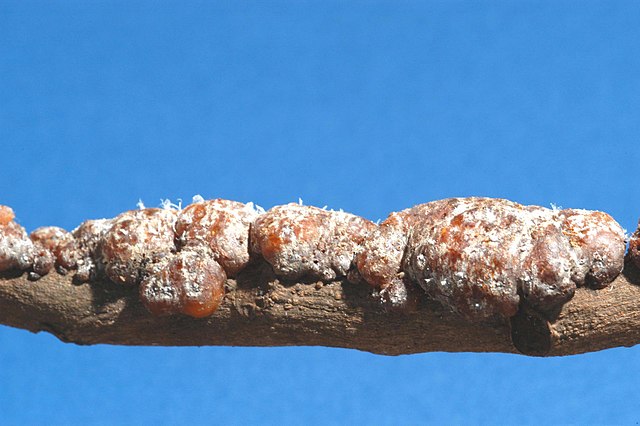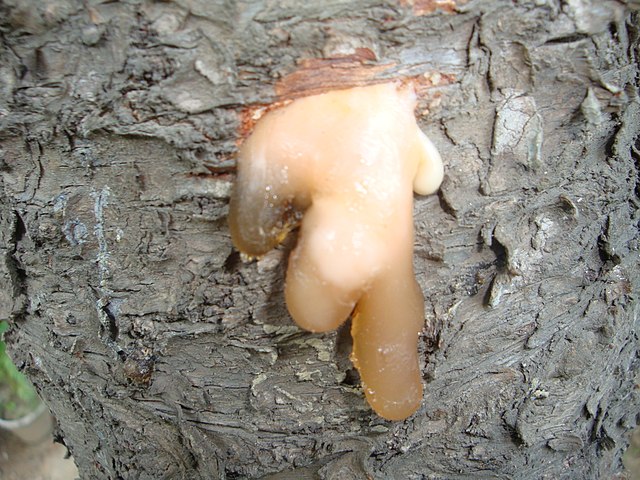Shellac is a resin secreted by the female lac bug on trees in the forests of India and Thailand. Chemically, it is mainly composed of aleuritic acid, jalaric acid, shellolic acid, and other natural waxes. It is processed and sold as dry flakes and dissolved in alcohol to make liquid shellac, which is used as a brush-on colorant, food glaze and wood finish. Shellac functions as a tough natural primer, sanding sealant, tannin-blocker, odour-blocker, stain, and high-gloss varnish. Shellac was once used in electrical applications as it possesses good insulation qualities and seals out moisture. Phonograph and 78 rpm gramophone records were made of shellac until they were replaced by vinyl long-playing records from 1948 onwards.
Shellac in alcohol
Lac tubes created by Kerria lacca
Drawing of the insect Kerria lacca and its shellac tubes, by Harold Maxwell-Lefroy, 1909
A decorative medal made in France in the early 20th century moulded from shellac compound, the same used for phonograph records of the period
In polymer chemistry and materials science, a resin is a solid or highly viscous substance of plant or synthetic origin that is typically convertible into polymers. Resins are usually mixtures of organic compounds. This article focuses mainly on naturally occurring resins.
Insect trapped in resin
Cedar of Lebanon cone showing flecks of resin as used in the mummification of Egyptian Pharaohs
Extremely viscous resin extruding from the trunk of a mature Araucaria columnaris.
The material dripping from an almond tree looks confusingly like resin, but actually is a gum or mucilage, and chemically very different.








